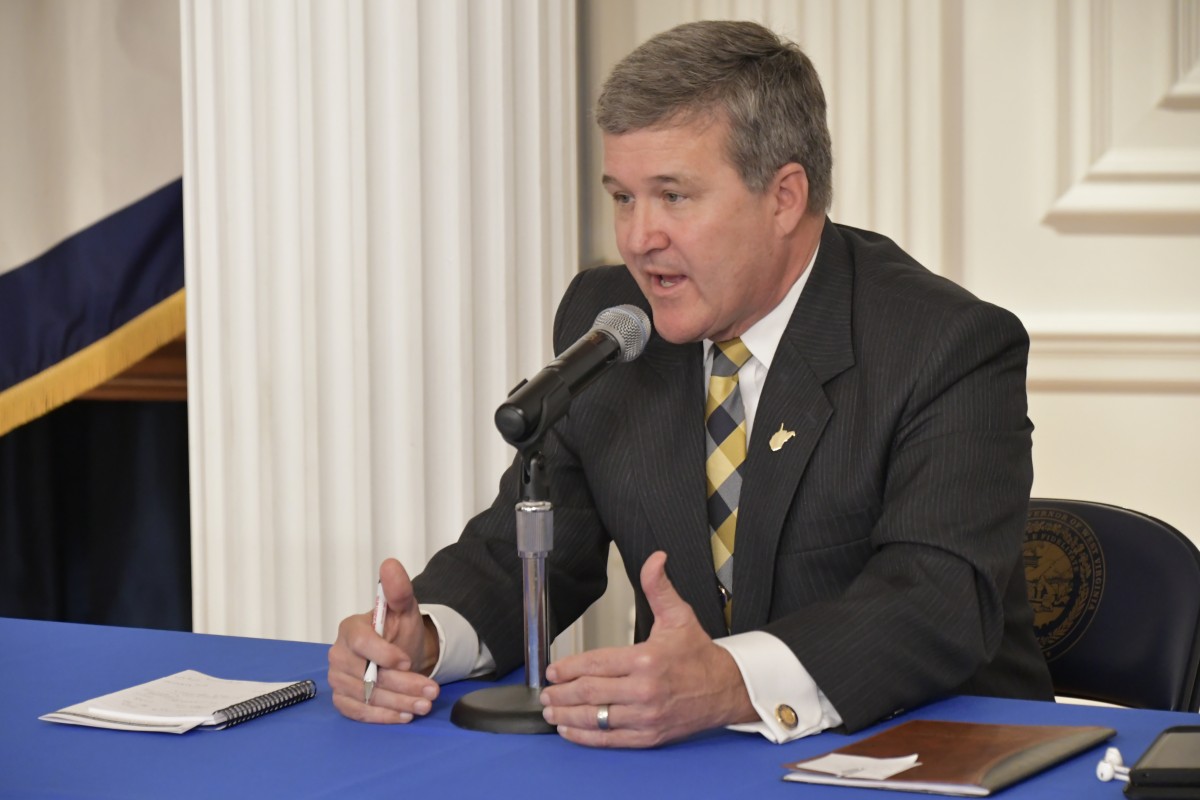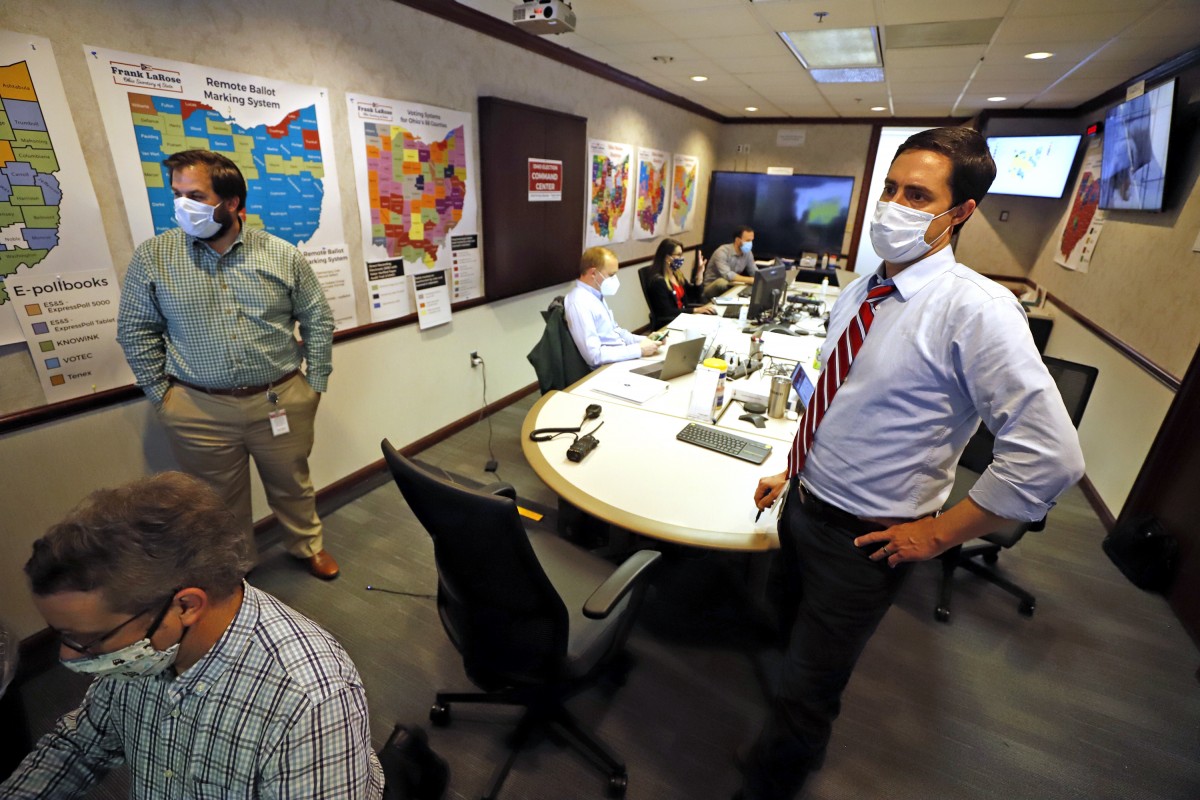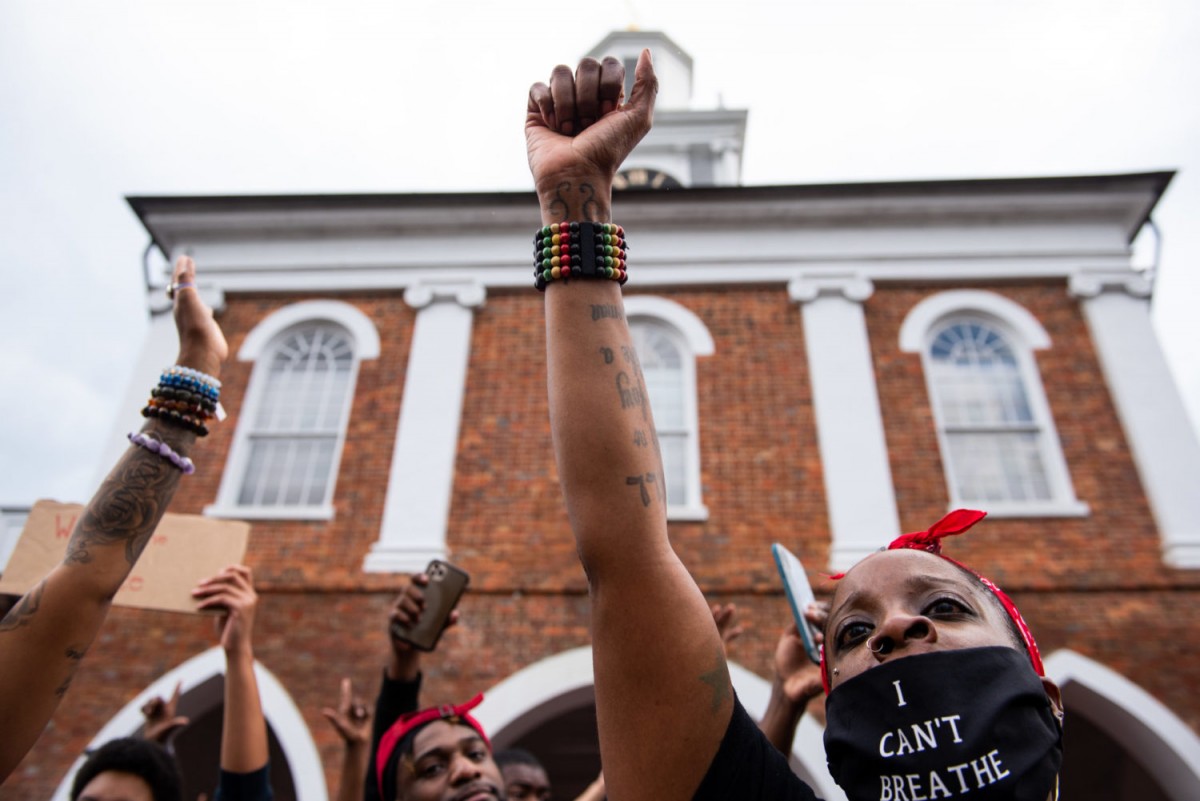Stormy Matlick used to not care about politics. She’s always voted, but she didn’t waste much time thinking about what the suits in Washington could do for her. As a single mom of three kids living in rural West Virginia, she says she’s always had more important things to do than worry if the politicians had her best interests in mind.
Matlick has worked in social services for the last nine years, and trying to provide for her family on less than $21,000 a year means she’s become well-acquainted with the services she often recommends for her clients. It was that personal experience that pushed her to get more involved in local politics this year.
“I’ve always voted, but I didn’t think for a really long time that I had a voice,” she said. “But we hired [our politicians] to do a job, and if they are going to do a bad one, then we should fire them and find somebody else. My thought process is unless we unsee what we think we know, we are part of the root of the problem.”
Matlick lives in Preston County, in West Virginia’s Allegheny Mountains, where per capita income is less than $20,000. And of the county’s roughly 35,000 people, about 14 percent of the population live below the poverty line.
As of 2018, West Virginia was ranked 49th out of 50 states in terms of voter turnout. But as changes to the election process begin to take hold in this COVID-19 era, Matlick wonders if her state– and others who have also expanded voting options– might actually see more people participating in this year’s elections. Voting experts say the impact of coronavirus on top of longer term issues of voter participation likely mean that won’t be so.
COVID-19 Has Sparked Serious Tests of State Voting Systems
Lucille Wenegieme, director of communications and public relations at Vote at Home, a nonprofit organization dedicated to putting the needs of voters first, said to increase voter participation this election cycle, the obvious first step would be to look at what the voter needs.
“Traditionally, voter reforms have been geared toward a very small subset of people who had a very small amount of influence. How would you design a system if you were to look at the voter first, who often works multiple jobs away from home while navigating childcare? If you looked at that and that system, it would look very different from the system that we have today,” she said.
But the needs of voters have changed in the wake of this global pandemic, allowing Vote at Home’s mission to gain traction as more and more state’s look for safe, more socially-distant alternatives for in-person voting.
In West Virginia, the state and federal primary election was originally scheduled for May 12 but in April, Governor Jim Justice announced it would be pushed to June 9. Secretary of State Mac Warner said the current plan is to keep election precincts open for early voting through Saturday, June 6, and to open again for voting the following Tuesday. All registered voters do have the option to vote absentee if they wish. But that is a first for the small state with comparably fewer resources than its neighbors that have done the same.

“We are really running four elections,” Warner said. “The first is voting in person on election day, and that’s the time-honored gold standard. The second is early voting, and third is the electronic election we run for a certain sliver of the population.”
But Warner said it’s the fourth voting option his state is offering this year – the absentee option granted to everyone because of COVID-19 – that is the biggest challenge for his office and for County Clerks across the state right now.
“In the past, we’ve only had two to three percent [of voters] vote absentee, and as of late April, the clerks already had a third of the voters register for an absentee ballot,” Warner said. “This will mean a mountain of mail coming at these clerks, but we’re trying to make it as easy as possible to vote. This is a very important election.”
This week, the Appalachian states of Maryland and Pennsylvania will hold either state primaries, presidential primaries or both, moved from the end of April. West Virginia, Georgia, Kentucky, North Carolina, South Carolina, New York, Alabama, Mississippi and Tennessee all have elections scheduled for the coming weeks and months, many of which were also moved because of COVID-19.
South Carolina, like West Virginia, is also allowing all registered voters to vote absentee, both following in the footsteps of one of the most contentious primary states this year – Ohio.

In Ohio, in-person voting in March was cancelled and replaced with an almost all absentee ballot election in April, with exceptions for people with disabilities or without mailing addresses. But in that state, much like West Virginia, election officials created a two-step voting process. They sent voters postcards with instructions on how to apply for an absentee ballot before actually sending them the mail-in slate, and elections experts believe that extra step is what led to Ohio’s significantly lower than usual turnout – some 20 percent in 2020 compared to 38 percent in 2016’s presidential primary and 42 percent in 2008 .
“The large number of voters who made errors in Ohio illustrates that mail-in voting shifts around which populations are advantaged and which are disadvantaged, but it does not create a voting system of perfect equality,” said D. Stephen Voss, associate professor of political science at the University of Kentucky and a specialist in elections and voting behavior.
“[To learn from Ohio’s attempt], other states that might prioritize participation more and election security less could, for example, remove steps from their process compared to Ohio’s,” he said, “but people still will make mistakes – just as they do with other similar actions like refilling a prescription or paying a bill.”
But the potential for voter fraud – potential that voting experts have said is very rare and unlikely – have been used in messaging from Republican politicians all the way up to the White House to deter states and voters from relying on and trusting these newer election systems, like mail-in ballots. Late last month, Warner said his office and law enforcement discovered a ballot fraud scheme that was investigated by the West Virginia Election Fraud Task Force and classified as non-threatening, but, he said, even one allegation of fraud can have a significant impact on voters’ confidence in the safety and legitimacy of an election.
Outside of the region, states like Washington, Oregon, Utah, Colorado and Hawaii have already established successful vote-by-mail processes, and on May 9, California joined the ranks when Governor Gavin Newsom signed an executive order mandating that all registered voters be mailed a ballot for the November general election. And despite potential concerns, like voter error, advocates like Vote at Home’s Wenegieme hope the benefits of making voting more accessible prompt community leaders to carry these changes into a post-COVID-19 era.
Wenegieme lives in Colorado, which ranks second out of the 50 states with a 63 percent voter turnout rate. In 2013, Colorado legislators passed a comprehensive election reform package which included providing all registered voters with mail-in ballots without needing to request them, removing the extra step that states like Ohio and West Virginia implemented, potentially harming voter turnout. Wenegieme said Colorado’s policy is also “exponentially more cost effective.”
“In order to allow some of these large scale changes, you have to change the legislation or allow leadership to make provisions,” Wenegieme said. “If you have either national or state pushes that are quite bold, then there is time to make it happen. But if we have people thinking about how to bandage things between now and the general election, you’re not getting as far as you could.
But Warner said to shift to an entirely vote-by-mail system in such a short amount of time is impractical, especially during a global health pandemic that is already taxing state governments. Kim Wyman, Washington’s Secretary of State, said her state began by allowing any registered voter to vote absentee back in 1993. Then, after a close gubernatorial race in 2004, there was a push to move to a fully vote-by-mail system. After making the decision — and building upon the previous 11 years of groundwork — it took five years to get all 39 Washington counties to move to voting by mail.
“We want maximum participation so the people have the confidence those they elect are the ones that have gotten the majority vote, and to do that, we need to keep all options available to the voters,” Warner said.
Even in a normal year, millions of Americans don’t vote
Voss, who conducts hundreds of interviews every year on elections, said changes of any kind tend to shake some voters loose. But this year, because COVID-19 has all but ended the social aspects of an entire community in the midst of a campaign, he worries that voter turnout will be significantly lower than normal.
“Voting is a social act. If we know everybody has to vote on election day, we know when to spend our money and where to concentrate our [campaign] efforts,” he said of a normal election year, but even then “a lot of folks don’t feel a sense of influencing the system, so they just don’t vote. They find the process of finding where to vote and going to do it more burdensome and maybe a bit scary.”
Evette Alexander, director of impact and strategy with The John S. and James L. Knight Foundation, said it’s those people — the non-voters — that she is most concerned about.
In February, The Knight Foundation released a report detailing the election behaviors of the 100 million Americans that choose not to vote every year. According to the data, non-voters are more likely to be distrustful of the voting process and less likely to keep up with the news. These voters also reported a lack of confidence that their values would be represented in the results of an election.
Alexander thinks one way voter participation numbers could increase, even in this unprecedented election cycle, is by engaging an often-overlooked population — young voters.
“I think a lot of the political campaign narratives are often geared toward the most likely voters, and that is baby boomers right now,” she said, people ages 56 to 76. But Abby Kiesa of the Tufts University’s Center for Information and Research on Civic Learning and Engagement, a hub for research on youth participation in civic life, believes that the thought that young people aren’t interested in political engagement is a myth. Kiesa said CIRCLE’s goal is to leverage her organization’s findings to reach young voters.
“A lot of our research has uncovered that there is this cycle of people saying young people don’t care, and they start to believe that too,” she said. “One of the things I think we can do a lot better at is engaging young people in genuine conversations and actually including them in designing efforts to reach other potential voters.”
Austin Sanders is a political science major at Marshall University in Huntington, West Virginia. His work in collaboration with the Cabell County Election Commission has proven that millennials and Gen Z-ers do care — and that involving young people in designing campaigns and programs generates meaningful results.
“I brokered an agreement with the commission that chartered the first on-campus early voting precinct in state history, and because of that, voter turnout among voters between ages 18 and 25 more than doubled,” he said. “Here, the most significant barriers are often access and convenience, and my whole goal is to empower people with common-sense solutions and greater access.”
Because of Sanders’s collaborative work, West Virginia University plans to host West Virginia’s second on-campus early voting precinct this fall.
Adam Strong, research impact fellow with CIRCLE and a native of Franklin County, Kentucky, said something else he would like to see is local offices and campaigns leveraging the small-town feel to provide wider accessibility in many Appalachian communities.
“Back home, I had people running for office knock on my door, and I got registered to vote standing at my door. That level of access was very pivotal for me, but I understand that the structure is different everywhere and those same opportunities are not common practice,” he said.
“Oftentimes, the person running might not know you but they may know your grandparents. You hear a lot of, ‘Whose are you? What’s your last name?’ Then immediately all those memories and emotions and stories bubble up. I think that really highlights how much contact matters and how important it is to engage with people.”
Matlick said the same goes for Preston County. She’s currently running for a House of Delegates seat there and said the more people she talks to in her community, the more she understands what it means to meet a person where they are.
“I’m poor, and Preston County is a poor county. But that doesn’t mean it’s not full of good people with big potential who deserve to have a voice in the changes in their community. So many people are saying, ‘I don’t vote because it’s not going to matter.”
“We know the people in office don’t want to talk to us. It’s like they think if they sit around the table with poor people and people with [substance abuse disorders], they’re going to catch it,” she said. “You can’t just expect everybody to know what you know. Some people don’t get politics because they’ve never had it explained to them. Those are the folks I’m reaching out to. Those are the folks I want to empower and to show that they can do whatever they set their minds to. Those are the people I want to teach that they can make changes in their community by using their voice and their vote.”
Matlick’s kids are 12, 13 and 19, and she said if she could make sure they learned one thing from all this, it would be the power of their own voices
“I hope that they see that they don’t have to sit back,” she said. “I want them to be leaders and to know that if they don’t believe in something, it’s okay to speak up for themselves and their neighbors and for what’s right.”
Bailey Basham is a journalist based in Winchester, Tennessee. Born and raised on the Cumberland Plateau, she writes frequently about food, the environment, sustainability, arts and entertainment, and the people that hold communities together.



